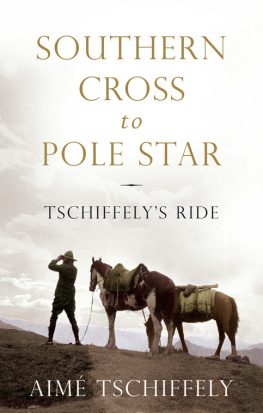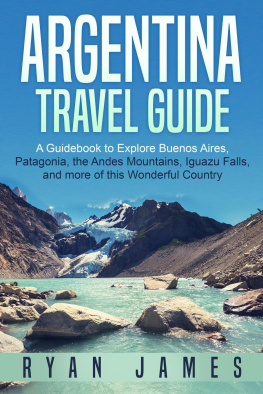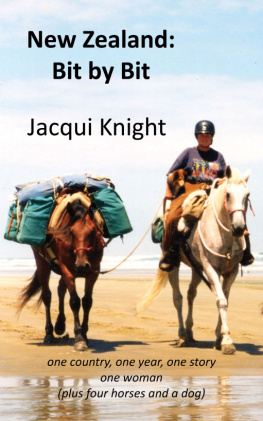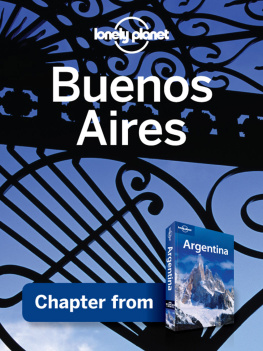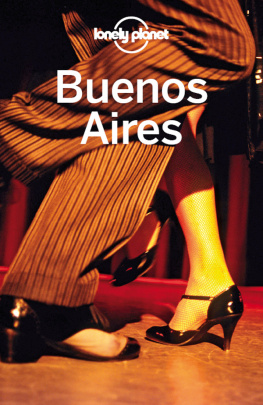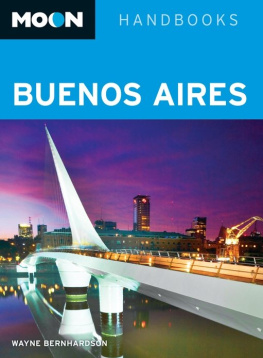


www.headofzeus.com
T HIS B OOK IS D EDICATED
To all lovers of the horse and the wide open spaces;
And to many friends of whatever race, nationality or creed
Who did their utmost to make rough places smooth .
AIM TSCHIFFELY
From an oil painting by A.J. Drucker,
London 1932.
Contents
MANCHA AND GATO
From an oil painting by L. Cordiviola.
I am very proud to have been invited to write the introduction to the new edition of the most important and inspirational book ever about a long ride. It was Aim Tschiffely who inspired me and countless others to ride long distances across often wild and remote countries; and it was his example that taught us to care for and respect our mounts, often developing, as he did, great mutual affection in the process.
Many of my early explorations were in South America and although they did not often involve horses the idea of Tschiffelys great ride was always there in the background. Once, the Jeep in which I made the first land crossing of South America at its widest point in 1958 broke down on the island of Bananal, the largest inland island in the world, which had never previously had a vehicle on it. The only way to get help was to leave my companion, Richard Mason, to fend for himself by living off the land and catching piranha, while I borrowed a horse from a settler and rode some 500 kms to the nearest roadhead. It was my first long ride and the brave little horse, perhaps a very distant relation of Mancha and Gato, did me proud, swimming across rivers, finding his way through dense bush and delivering me safely to an isolated farm. From there I was able to hitch a lift on a truck and return triumphant with another Jeep and welding gear. The settler, who never charged me for the horse, said he would be going that way soon and would collect it then. Such is the hospitality and generosity of those who live in very remote places, something all long riders will be very aware of. Often our greatest problem is finding ways to repay them without insulting them!
Our first proper long ride was across France, when Louella and I bought the first two Camargue horses ever to come to Britain, Thibert and Tiki, and rode them some twelve hundred miles across the continent, crossed the English Channel on the Roscoff to Plymouth car ferry and then rode home to our hill farm on Bodmin Moor. They proved ideal cattle horses, as might have been expected, and we later brought another six over, so that for a time we had a herd living relatively free, as Camargues traditionally do on the marshes at the mouth of the Rhne. They always came when we called and one of our great delights was to stand at the bottom of the hill as they thundered towards us, eager for affection and perhaps for the apple they knew we had for each of them.
Our French ride, which resulted in a BBC film and a book, taught us what a joy long riding is. As I have often said elsewhere, what can be better than sitting on an intelligent animal, who is doing all the work and leaving us free to talk, hold hands and admire the view. We subsequently gained the first ever permission to ride the whole length of the Great Wall of China. Although we had to skip some major stretches in the Walls 1800-mile (3000-km) length due to security issues, we followed it from Shanhaiguan on the Yellow Sea to Jiayuguan on the edge of the Takla Makan Desert on three pairs of horses, covering a thousand miles (1650 kms). Next we rode from one end of New Zealand to the other, then across Spain twice, once being on the pilgrimage to Santiago de Compostela, once driving longhorned cattle on the trashumancia . Then we inaugurated the Pennine Bridleway through northern England and finally we rode the length of Albania through the mountains.
And so we have done our bit, but like every other long rider in the world, we bow in homage to the great man who started it all. His book deserves to be read more than once and this new edition is most welcome.
ROBIN HANBURY-TENISON OBE, DL, FLS, FRGS
Explorer and Founder Member of the Long Riders Guild
14th March 2014
You are holding history in your hands.
Since it was first published in 1933, Tschiffelys Ride has inspired courageous Long Riders from every subsequent generation to swing into the saddle and head for the horizon in search of their own adventures.
When Pedro de Aguiar of Brazil rode through the Amazon jungle, he cited the author as his inspiration. When Tim Severin of Ireland rode from Paris to Jerusalem, he credited the same equestrian explorer as his hero. When I rode from Russia to England, I offered him my silent thanks. Robin and Louella Hanbury-Tenison of England rode along the Great Wall of China. Vladimir Fissenko of Russia rode from Patagonia to Alaska. Like me, they too found encouragement within these pages.
For this is the most exciting and influential equestrian travel tale of all time.
But few of the books many readers realize that its a miracle the story ever saw the light of day. Tschiffely was a school-teacher, not an equestrian explorer or a professional writer. His unlikely dream was to ride 10,000 miles from Buenos Aires, Argentina, where he worked, to New York City. In between lay some of the continents most intimidating physical obstructions, including the towering Andes mountains, steamy jungles and the infamous Mata Caballo, the Horse Killer desert.
After more than two harrowing years, the man who had originally been labelled mad by the press was accorded a heros ticker tape parade when he rode through the streets of New York. Then, having taken his two Criollo horses back to Argentina by ship, Tschiffely undertook an equally daunting task: to write this book.
Like countless authors before and since, Tschiffelys literary dreams were repeatedly hampered by the realities of the publishing world. When the book was rejected in Argentina, he refused to be discouraged. He journeyed back to the United States and offered it to American publishers. Hungry for thrills, they urged him to adulterate the story. He declined, and used his dwindling funds to sail to London instead. There he was politely shown the door by publishers more interested in automotive than equestrian adventure.
Years later Tschiffely recalled how he found himself reduced to a meagre sum, homeless and hopeless in a foreign metropolis, his journey over, his story unsung. Yet fate had one surprise left.
Thanks to a chance encounter, Don Roberto Cunninghame Graham, known as the Gaucho Laird, came to learn of Tschiffelys presence in London. Cunninghame Graham was a legend in London, where he enjoyed a well-deserved reputation as a political firebrand, a courageous equestrian explorer and a celebrated author. Thanks to newspaper stories he had read while the journey was under way, Don Roberto was also a quiet fan of Tschiffelys remarkable ride. The older Scottish author arranged to meet the Swiss traveller the day before Tschiffely was due to sail back to Argentina.
It was Don Roberto who insisted that Tschiffely entrust the well-thumbed manuscript to him overnight. A man of intense modesty, Tschiffely hesitated. He had, he explained, no pretensions at being a writer. How could he hand over his unpolished tale to one of Englands most renowned writers? Cunninghame Graham carried the day, and then spent the night reading the story. He immediately saw how important the book was.
Next page
